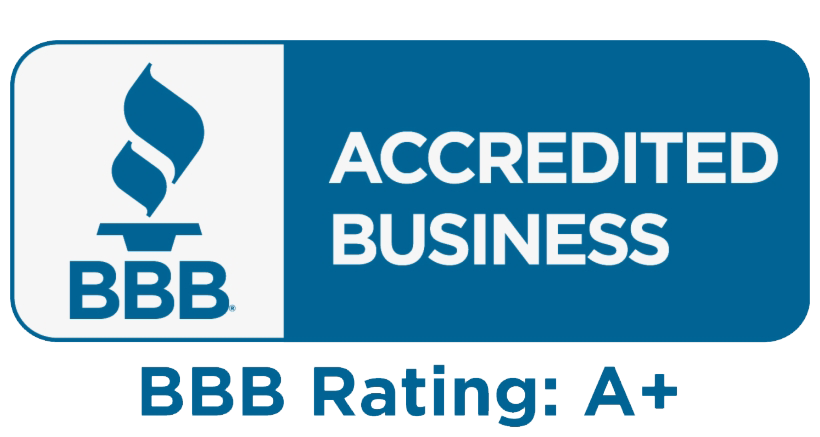Blog

Can I Use Concrete Overlay on Asphalt? A Guide to Paving, Roofing Repair, and Surface Longevity
If you’ve ever wondered, can I use concrete overlay on asphalt?, you’re not alone. Many property owners and contractors look for cost-effective and durable ways to improve the appearance and longevity of their existing asphalt surfaces. Applying a concrete overlay is one option that might seem appealing, but is it practical? Can you really get the benefits of concrete without tearing up the existing asphalt?
In this in-depth guide, we will explore whether a concrete overlay can be applied over asphalt, what factors to consider, and the pros and cons of this method. Whether you’re looking to upgrade your driveway, parking lot, or another paved surface, understanding how these two materials interact is essential to making the right decision for your project.
Roofing Repair: Don’t Overlook Your Roof While Improving Pavement
While upgrading outdoor surfaces like driveways or parking lots, don’t forget about roofing repair. A well-maintained roof protects the entire structure, including paved areas below, by preventing leaks and ensuring proper drainage. Water damage from a compromised roof can negatively impact foundations and paved surfaces, so addressing any roofing issues alongside pavement improvements is a smart move.
What Is a Concrete Overlay?
Before diving into whether you can apply a concrete overlay to asphalt, let’s clarify what a concrete overlay actually is. A concrete overlay involves applying a thin layer of cement-based material over an existing surface to restore its appearance, improve durability, or add decorative features.
Overlays are often used to fix minor surface imperfections, such as cracks or worn areas, without the need for full-depth replacement of the underlying surface. Typically, these overlays are applied over existing concrete, but the idea of placing one over asphalt is where things become more complex.
Can You Put Concrete Over Asphalt?
The short answer is yes, you can place a concrete overlay over asphalt in certain conditions, but there are several important factors to consider. While it’s possible, it’s not always the best long-term solution. Here’s why:
- Structural Compatibility
Asphalt and concrete are two very different materials with distinct properties. Asphalt is flexible and tends to shift slightly over time, especially in response to temperature changes. In contrast, concrete is much more rigid. If the asphalt underneath shifts, it can cause the concrete overlay to crack or even fail prematurely.
Therefore, the existing asphalt needs to be in good structural condition before applying a concrete overlay. If the asphalt is heavily cracked, deteriorated, or unstable, it’s likely that those issues will transfer to the concrete, leading to unsightly and possibly dangerous surface problems.
- Base Preparation Is Key
One of the most important steps in overlaying concrete on asphalt is ensuring that the asphalt is properly prepared. The existing asphalt needs to be cleaned thoroughly, and any significant cracks or potholes should be repaired. In some cases, a bonding agent is applied to help the concrete adhere to the asphalt surface.
However, even with careful preparation, the inherent differences in how asphalt and concrete react to environmental conditions can cause issues. Concrete doesn’t expand and contract as easily as asphalt, meaning temperature changes can lead to cracking in the concrete overlay if the base isn’t perfectly stable.
Factors to Consider Before Using a Concrete Overlay on Asphalt
If you’re thinking about applying a concrete overlay to an asphalt surface, several factors need to be evaluated before moving forward:
- Condition of the Asphalt
The success of a concrete overlay largely depends on the condition of the asphalt underneath. If the asphalt is old, brittle, or has large cracks and potholes, the overlay will not solve the underlying problems. The asphalt will need significant repairs or, in some cases, a complete replacement before any overlay is applied.
Expert Insight: “The condition of the base is critical. If the asphalt is weak or damaged, you’re setting yourself up for failure. The overlay will reflect the problems of the underlying material,” says Mark Richardson, a paving contractor with over 25 years of experience in both asphalt and concrete paving.
- Traffic and Load Considerations
If the surface you’re working on will experience heavy traffic or loads, such as a commercial parking lot, putting concrete over asphalt can be risky. Asphalt, being a flexible material, might not provide the necessary support for the rigid concrete overlay under heavy pressure. This could lead to cracking, shifting, or even complete failure over time.
- Drainage Concerns
Proper drainage is always important in paving projects, but it becomes even more critical when combining materials like asphalt and concrete. The way water flows through and around the surface can affect the lifespan of both materials. Asphalt is more porous than concrete, meaning water can seep through it. If water gets trapped between the asphalt and concrete overlay, it can lead to premature failure of both layers.
Pros and Cons of Using a Concrete Overlay on Asphalt
Like any paving solution, using a concrete overlay on asphalt comes with its own set of benefits and drawbacks. Understanding these pros and cons will help you decide whether it’s the right option for your project.
Pros:
- Cost-Effective Solution
A concrete overlay on asphalt can be more cost-effective than tearing out the asphalt and replacing it entirely. By reusing the existing asphalt as a base, you save on material costs and labor.
- Enhanced Appearance
Concrete overlays can drastically improve the appearance of an old, worn-out asphalt surface. Decorative overlays can be stamped, colored, or textured, offering aesthetic appeal that traditional asphalt paving may lack.
- Increased Durability
When properly applied, a concrete overlay can extend the life of an asphalt surface by providing an extra layer of protection. The concrete adds strength and helps prevent further wear and tear on the asphalt below.
Cons:
- Risk of Cracking
Asphalt and concrete have different expansion and contraction rates, meaning that the concrete overlay is more likely to crack if the asphalt underneath shifts or moves. This is especially true in regions with significant temperature fluctuations.
- Potential for Poor Adhesion
If the asphalt isn’t properly prepared, the concrete may not adhere well, leading to peeling or delamination over time. A weak bond between the two layers can cause the concrete overlay to fail prematurely.
- Limited Lifespan
While a concrete overlay can extend the life of asphalt for several years, it’s not a permanent solution. Eventually, the asphalt underneath may deteriorate to the point where a full replacement is necessary.
Alternatives to Concrete Overlay on Asphalt
If the risks and limitations of a concrete overlay on asphalt are too great for your project, there are alternatives that might provide a better long-term solution.
- Asphalt Overlay
An asphalt overlay is often a more compatible and durable option. This process involves applying a new layer of asphalt over the existing surface, repairing any imperfections, and smoothing out the top layer. Asphalt overlays provide a fresh, smooth surface while still allowing for some flexibility in the pavement.
- Full Depth Asphalt Replacement
If the existing asphalt is severely damaged, a full-depth replacement might be the best option. This involves removing the old asphalt and installing a new layer from the base up. While more expensive than an overlay, a full replacement offers the longest-lasting solution for driveways and parking lots that require significant repair.
- Concrete Driveway Installation
If you’re set on using concrete but have concerns about the asphalt base, consider removing the asphalt entirely and installing a full-depth concrete driveway or parking area. This option eliminates the risk of compatibility issues between the two materials.
Real-Life Example: When Concrete Overlay on Asphalt Worked
One example of a successful concrete overlay on asphalt was a homeowner who wanted to improve the aesthetics of their driveway but didn’t want to tear out the existing asphalt. After evaluating the condition of the asphalt and ensuring it was stable and well-drained, they applied a decorative concrete overlay.
By choosing a stamped concrete pattern that mimicked natural stone, the homeowner not only enhanced the look of their driveway but also extended its lifespan by several years. Regular maintenance, such as sealing and cleaning, has kept the overlay in excellent condition.
Conclusion: Can You Use Concrete Overlay on Asphalt?
So, can you use a concrete overlay on asphalt? Yes, it’s possible, but it requires careful consideration of factors like the condition of the asphalt, traffic loads, and drainage. If the asphalt is stable and properly prepared, a concrete overlay can be a cost-effective way to extend the life of your surface while improving its appearance. However, it’s not always the best solution, especially for surfaces that experience heavy use or significant temperature changes.
If you’re unsure whether a concrete overlay is the right choice for your project, consider consulting with a professional paving contractor who can assess the condition of your asphalt and recommend the best course of action. Whether you opt for an asphalt overlay, full replacement, or concrete installation, making an informed decision will ensure the longevity and durability of your surface.
For more information or to get an expert opinion, reach out to local asphalt or concrete paving professionals today!








